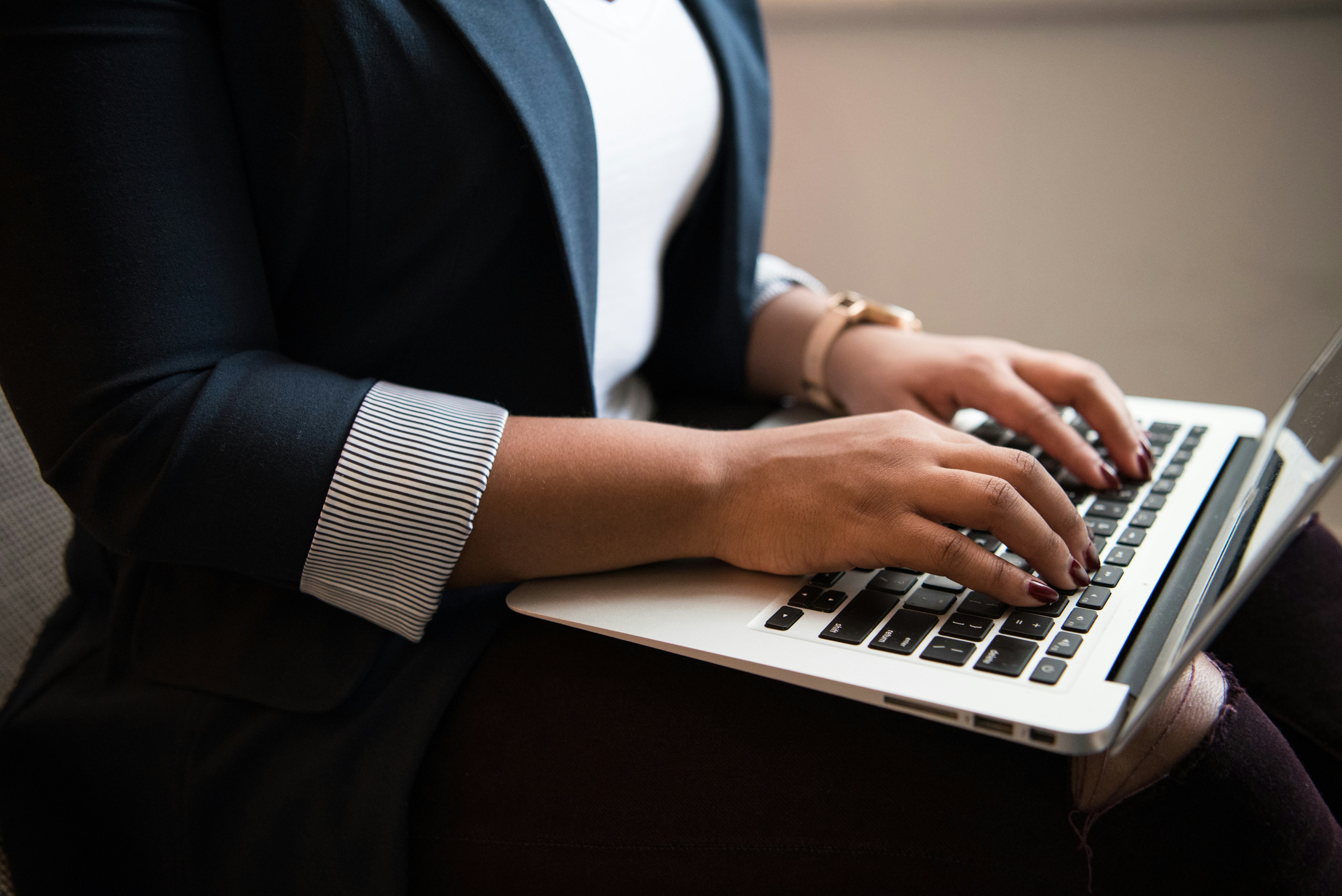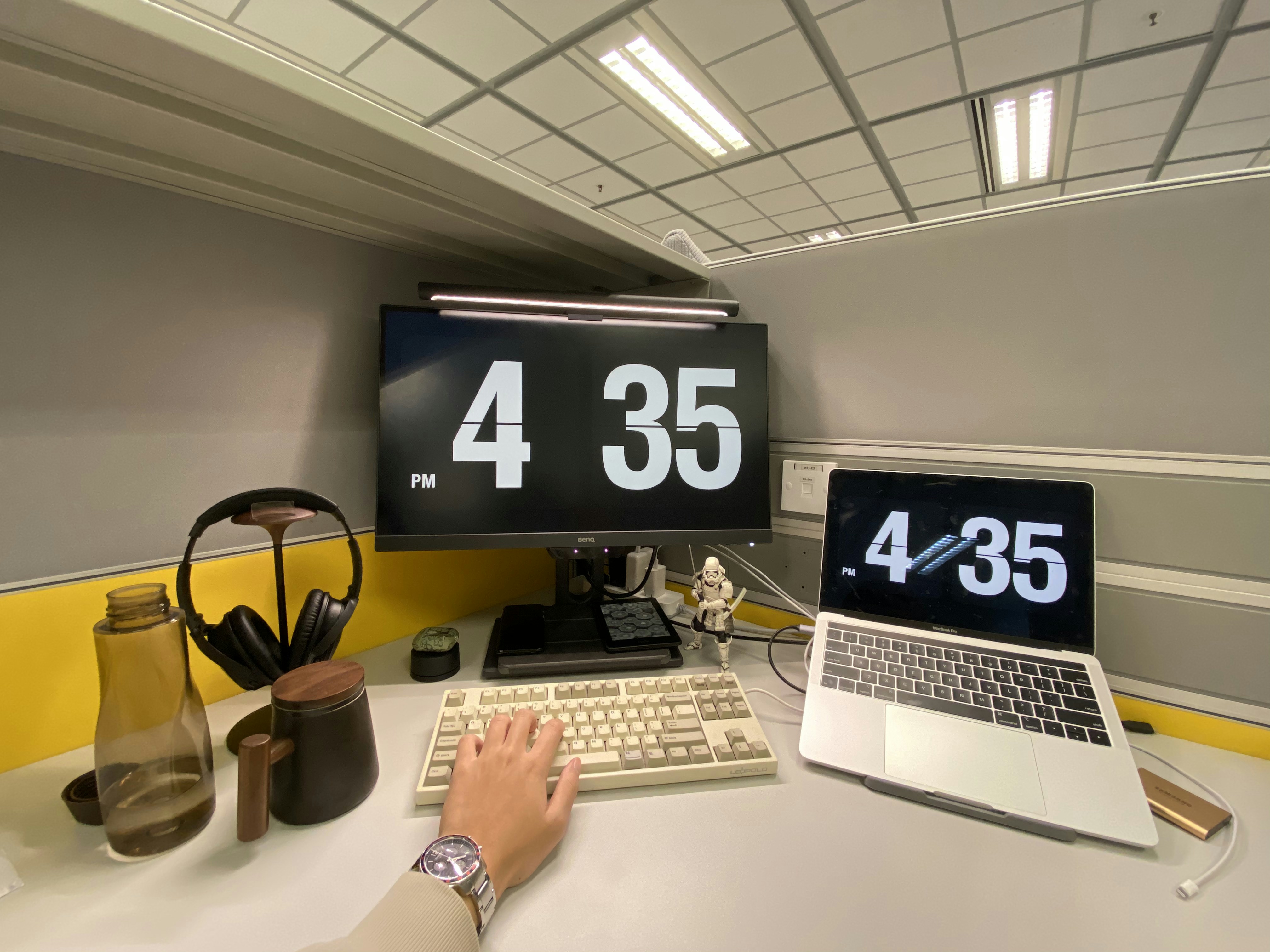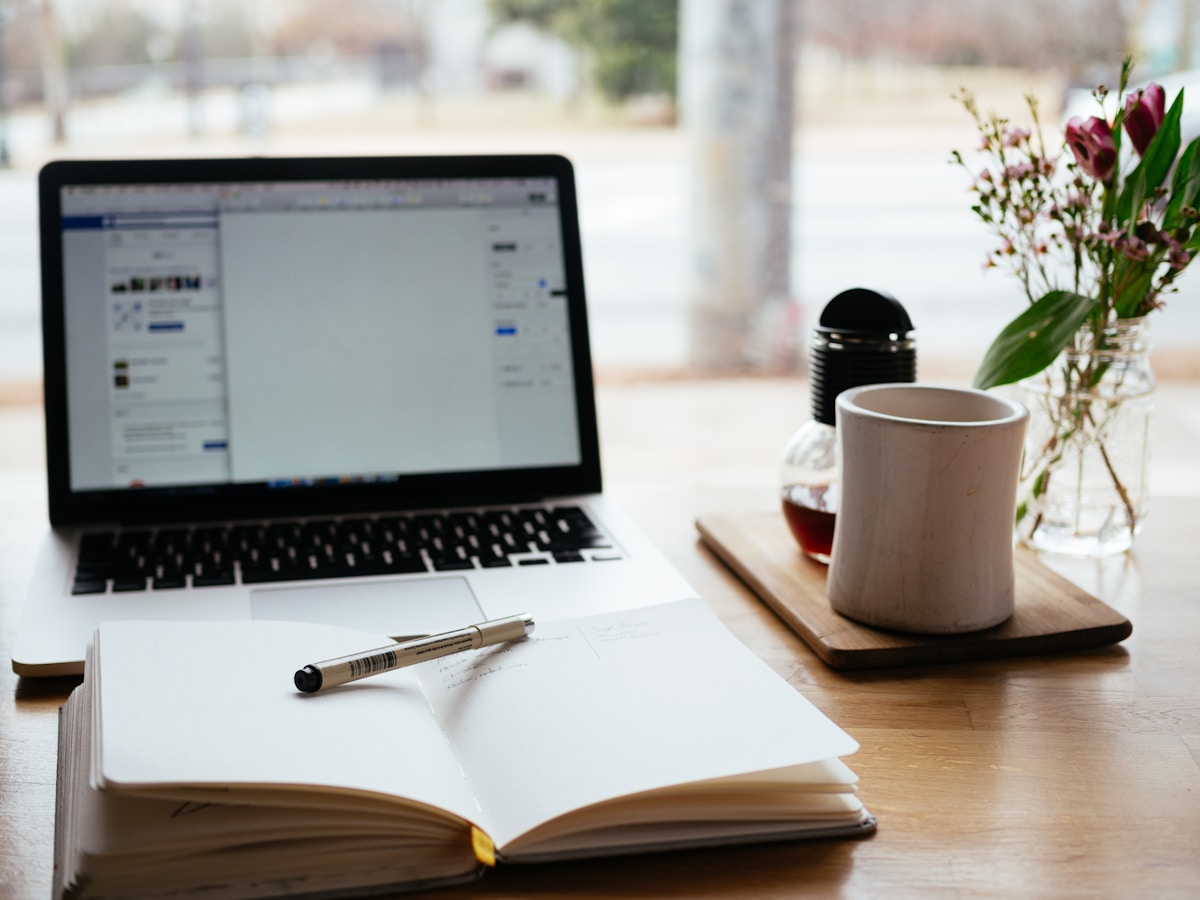Mastering Email Etiquette: 7 Essential Rules for Effective Communication
Mastering Email Etiquette: 7 Essential Rules for Effective Communication

Email etiquette is crucial for effective communication in the business world.
In today's fast-paced digital world, email has become the primary mode of communication in business settings. However, it's not just the content of the email that matters; it's also how you present yourself and communicate effectively through email etiquette. Proper business email etiquette is crucial for maintaining professionalism, building strong relationships, and achieving success in the corporate world.
What is Business Email Etiquette?
Email etiquette refers to a set of guidelines that govern how we should compose and respond to emails in a professional manner. It goes beyond simply using correct grammar and spelling; it encompasses the tone, structure, and overall impression we create through emails. We respect our recipients' time and attention when we adhere to proper email etiquette.
The Impact of Proper Business Email Etiquette
The impact of proper business email etiquette cannot be overstated. It sets the tone for effective communication and helps establish a positive online reputation. Communicating professionally through emails enhances our credibility, builds trust with colleagues and clients, and increases the likelihood of achieving our desired outcomes.
Key Rules for Effective Communication
To ensure effective communication through emails, there are key rules that should be followed:
- Be clear and concise. Use simple language to convey your message effectively without overwhelming your recipients with unnecessary details.
- Be respectful. Treat your recipients with courtesy and professionalism at all times.
- Be mindful of tone. Choose your words carefully to strike the right tone that aligns with your intended message.
- Use proper grammar and spelling. Errors can undermine your credibility, so proofread before hitting send.
- Keep it brief. Respect your recipients' time by keeping emails concise and providing necessary information.
Remembering these key rules will help you navigate the intricacies of business email communication successfully.
1. Setting the Tone

To establish effective communication through email, it is crucial to set the right tone. This includes using a clear and concise subject line, choosing the appropriate greeting, and being mindful of your tone and language.
Use a Clear and Concise Subject Line
The subject line of your email serves as a preview for the recipient, helping them understand the purpose or content of the message at a glance. To ensure clarity, it is important to use a subject line that accurately reflects the main point of your email. Avoid vague or generic subject lines that may confuse or mislead the reader.
For example:
Subject: Meeting Request for Project Update
A specific subject line like this allows the recipient to understand the email and quickly prioritize their responses.
Choose the Right Greeting
The greeting you choose sets the tone for your email and can convey respect and professionalism. When addressing someone you have a professional relationship with, it is appropriate to use their name preceded by Dear (e.g., Dear Mr./Ms./Dr.). If you are less familiar with the recipient or are initiating contact for the first time, consider using a more neutral greeting such as Hello or Hi.
For example:
Dear Ms. Johnson,
An appropriate greeting shows courtesy and professionalism from the beginning of your email.
Watch Your Tone and Language
The tone and language you use in your emails can greatly impact how others receive them. It is important to balance being professional and friendly without being overly formal or casual.
Avoid using slang, jargon, or offensive language that may be misunderstood or unprofessional. Instead, opt for clear and concise language that effectively conveys your message while maintaining a respectful tone.
Remember that emails lack non-verbal cues such as facial expressions and body language, so it's essential to be mindful of how the recipient may interpret your words.
By setting the right tone through a clear subject line, appropriate greeting, and careful choice of language, you can ensure that your emails are received positively and effectively convey your message.
2. Being Polite and Professional

To maintain proper business email etiquette, it is crucial to be polite and professional in your communication. This section will highlight key aspects of politeness and professionalism in email correspondence.
Use Proper Grammar and Spelling
One of the fundamental rules of email etiquette is to use proper grammar and spelling. Poor grammar and spelling errors can create a negative impression on the recipient, reflecting poorly on your professionalism. Always take the time to proofread your emails before hitting the send button. Utilize spell-check tools or ask a colleague to review your message if needed.
Avoid Abbreviations and Emoticons
While informal abbreviations and emoticons may be acceptable in personal or instant messaging, they have no place in professional business emails. Using abbreviations like LOL or emoticons like smiley faces can be unprofessional and diminish your message's seriousness. Stick to complete sentences without shortcuts or unnecessary symbols.
Respond Promptly and Respectfully
Promptly responding to emails demonstrates respect for the sender's time and the urgency of their message. Aim to reply within 24 hours, even if it's just an acknowledgment of receiving their email with a promise for a more detailed response later on if necessary. When crafting your response, ensure that you remain respectful in tone, even if you disagree with the sender's viewpoint.
Remember, maintaining politeness and professionalism throughout your email communication is essential for building strong relationships with colleagues, clients, and business partners.
3. Structuring Your Emails

When it comes to email etiquette, structuring your emails properly is essential for effective communication. By using paragraphs and bullet points, keeping emails brief and to the point, and using formatting to enhance readability, you can ensure that your messages are clear and easy to understand.
Use Paragraphs and Bullet Points
To make your emails more organized and visually appealing, it's important to use paragraphs and bullet points. Break up your content into logical sections or topics by using paragraphs. This helps the recipient easily navigate through the email and locate specific information.
Bullet points are great for presenting lists or highlighting key points. They draw attention to important details and make the content more scannable. When using bullet points, keep them concise and use short phrases or sentences for each point.
Keep Emails Brief and to the Point
In today's fast-paced business environment, time is precious. Respect your recipients' time by keeping your emails brief and focused on the main purpose. Avoid unnecessary details or lengthy explanations that can overwhelm the reader.
Start by stating the purpose of your email clearly and concisely in the opening sentence or subject line. Use short sentences to convey your message effectively without losing their attention. If additional information is needed, provide links or attachments instead of including lengthy content within the email.
Remember that brevity doesn't mean being abrupt or rude; it simply means respecting others' time.
Use Formatting to Enhance Readability
Formatting plays a crucial role in enhancing readability in emails. Consider using bold or italicized text sparingly to emphasize important information or headings within your message.
Use white space effectively by leaving enough room between paragraphs and sections. This helps prevent your email from appearing cluttered and overwhelming to the reader's eye.
Avoid excessive capitalization or exclamation marks, as this can be perceived as shouting or unprofessional. Stick to a consistent font style and size throughout the email for a polished look.
By structuring your emails with paragraphs and bullet points, keeping them brief and to the point, and using formatting techniques to enhance readability, you can ensure that your messages are well-organized, easily digestible, and professional.
Effective communication through proper email etiquette is key to building strong professional relationships and achieving business success.
4. Considerate Email Practices

Avoid Overusing Reply All
Regarding email etiquette, one important consideration is using the Reply All function appropriately. While it can be tempting to include everyone in your response, it's crucial to consider whether every recipient truly needs to be involved in the conversation. Overusing Reply All can lead to unnecessary clutter in people's inboxes and even annoy your colleagues. Before hitting that button, carefully evaluate who needs to be included and ensure that your response adds value to the discussion.
Be Mindful of Confidentiality and Privacy
Respecting confidentiality and privacy is vital when it comes to professional email communication. Always double-check the recipients before sending, ensuring you're not accidentally sharing sensitive information with unintended individuals. If necessary, use blind carbon copy (BCC) when sending emails to a large group or when sharing confidential information with specific recipients. By being mindful of confidentiality and privacy, you demonstrate professionalism and protect yourself and others from potential breaches.
Use Email Signatures Effectively
An often overlooked aspect of email etiquette is the effective use of email signatures. Your email signature provides essential information about you and your company, making it easier for recipients to contact you or learn more about your role within the organization. Ensure your signature includes pertinent details such as your full name, job title, company name, phone number, and professional social media links, if applicable. Using an informative and well-designed email signature enhances professionalism and makes a positive impression on recipients.
In this image example above (image name: email_signature), we see a well-crafted email signature that includes all the necessary information for effective communication: full name (John Smith), job title (Marketing Manager), company name (ABC Corporation), phone number (+1-123-456-7890), and professional social media links (LinkedIn and Twitter icons). This email signature provides contact details and showcases professionalism and attention to detail.
Following these considerate email practices ensures your email communication is respectful, efficient, and professional. Avoiding overuse of Reply All, being mindful of confidentiality and privacy, and using email signatures effectively are all key aspects of proper business email etiquette. Incorporating these practices into your daily communication will help you maintain strong professional relationships, protect sensitive information, and uphold a positive online reputation. Remember, mastering email etiquette is essential for effective communication in the business world.
5. Avoiding Common Pitfalls

In the world of business email etiquette, there are certain pitfalls that should be avoided to maintain professionalism and effective communication.
Don't Use Email for Conflict Resolution
When it comes to resolving conflicts or addressing sensitive issues, email is not the most suitable medium. It lacks the personal touch and can easily be misinterpreted. Instead, opt for face-to-face meetings or phone calls to ensure clear understanding and effective resolution.
Be Cautious with Humor and Sarcasm
While humor can lighten the mood in a conversation, it is important to be cautious when using it in emails. Sh jokes can easily be misunderstood or come across as offensive without tone of voice or facial expressions. Similarly, sarcasm may not translate well through text and can lead to misunderstandings or hurt feelings.
Double-Check Email Recipients
Before hitting the send button, always double-check that you have selected the correct recipients for your email. Sending an email to the wrong person can lead to embarrassing situations or even potential breaches of confidentiality. Take a moment to review your recipient list and make sure it aligns with your intended message.
6. Professional Email Tips

In today's digital age, email has become a fundamental tool for communication in the business world. However, adhering to proper email etiquette is essential to maintain professionalism and ensure effective communication. Here are some professional email tips to help you navigate the world of business emails.
Be Mindful of Attachments and File Sizes
When sending attachments via email, it's important to be mindful of file sizes and formats. Large files can cause delays, clog up recipients' inboxes, or even bounce back due to size limitations.
To avoid these issues, compress large files before sending them or consider using file-sharing services like Google Drive or Dropbox instead of attaching them directly to the email. Additionally, make sure the file format is compatible with common software applications so that recipients can open and view them without any trouble.
By being considerate of attachment sizes and formats, you demonstrate respect for others' time and ensure smooth delivery of important information.
Be Respectful of Others' Time and Inbox
In today's fast-paced business environment, everyone is inundated with emails daily. To respect others' time and inbox space:
- Keep emails concise. Get straight to the point without unnecessary fluff or lengthy explanations.
- Use clear subject lines. Summarize the content of your email in a few words to help recipients prioritize and organize their inbox effectively.
- Avoid excessive follow-ups. Give recipients ample time to respond before sending multiple reminders or follow-up emails.
By being respectful of others' time and inbox, you show professionalism and consideration for your colleagues and clients.
Use a Professional Email Address
When it comes to email addresses, it's crucial to use a professional one that reflects your identity and aligns with your business. Avoid using personal or unprofessional email addresses that may give off the wrong impression. Instead, opt for an email address that includes your name or your company's name.
Using a professional email address helps establish credibility and makes it easier for recipients to identify and remember you. It shows that you take your business correspondence seriously and adds a touch of professionalism to your overall image.
7. Get a Professional Email Address with Strikingly

Strikingly Landing Page
Strikingly's custom email feature allows you to create professional and personalized email addresses for your business. With a custom email address, you can use your domain name instead of a generic email service like Gmail or Yahoo. This makes your email address look more credible and trustworthy and can help you build a stronger brand identity.

Strikingly Webmail on Mobile View
If you're looking for a way to make your business email look more professional and credible, Strikingly's custom email feature is a great option. You can create a stronger brand identity and build customer trust with a custom email address.
Here are some of the benefits of using Strikingly's custom email feature:
- Professionalism. A custom email address looks more professional than a generic one from a free service like Gmail or Yahoo. This can help you build trust with your customers and partners.
- Credibility. A custom email address can make your business seem more credible and trustworthy. This is especially important when dealing with clients or customers unfamiliar with your business.
- Branding. A custom email address can help you build your brand identity. Customers who see your email address will associate it with your business.

- Simplicity. Strikingly's custom email feature is easy to use. You can create a custom email address in just a few minutes.
Registering an Email Address
Here are the step-by-step instructions on how to buy custom email with Strikingly:=
- Go to your Strikingly dashboard.
- Click on the "Emails" tab.
- Click on the "Add Email Account" button.
- Enter your desired email address.
- Select your domain name.
- Choose your email plan.
- Click on the "Purchase Email Account" button.
Your custom email address will be created and activated within a few minutes. You will receive an email with your login information.
Here are some additional details about each step:
- Desired email address. You will use This email address to send and receive emails. It should be professional and easy to remember.
- Domain name. This is the domain name you want to use for your email address. You can purchase one from Strikingly or another domain registrar if you don't already have a domain name.

Mastering Email Etiquette for Effective Communication

Mastering email etiquette rules is crucial for effective communication in today's business world. By following the key rules and guidelines outlined in this article, professionals can ensure that their emails are clear, concise, and professional. Proper email etiquette helps to set the right tone, maintain professionalism, and avoid misunderstandings or misinterpretations.
Proper business email etiquette is a reflection of one's professionalism and competence. By utilizing proper grammar and spelling, avoiding abbreviations and emoticons, and responding promptly and respectfully, individuals can elevate their professionalism in their email communications. This enhances their personal reputation and contributes to building strong professional relationships.
The Power of Professional Email Etiquette
The power of professional email etiquette lies in its ability to enhance communication effectiveness and efficiency. When emails are structured properly using paragraphs and bullet points, kept brief and to the point, and formatted for readability, recipients can easily grasp the intended message without wasting unnecessary time or effort.
By being considerate in email practices such as avoiding overusing reply all, being mindful of confidentiality and privacy, and using email signatures effectively, professionals demonstrate respect for others' time and privacy.
Managing email volume by limiting the use of urgent tags or high-importance markers, setting expectations for response time, and utilizing filters and folders for organizations helps individuals stay organized amidst the influx of emails.
Avoiding common pitfalls like using email for conflict resolution or being cautious with humor or sarcasm ensures that emails are always professional. Double-checking recipients before hitting send prevents embarrassing situations or accidental disclosure of confidential information.
Following professional email tips such as using a professional email address, being mindful of attachments' file sizes to prevent overwhelming recipients' inbox space, and respecting others' time by keeping emails concise contribute to maintaining a positive online reputation.
In the era of mobile communication, it is important to keep emails mobile-friendly, be mindful of auto-correct errors that can alter the intended meaning, and disable email notifications during meetings to avoid distractions and maintain professionalism.
When closing emails, expressing appreciation and gratitude, summarizing the next steps clearly, and using a polite and professional closing help to leave a positive impression on recipients.
By cultivating professional relationships through proper email etiquette, demonstrating reliability and competence in email communications, and upholding a positive online reputation through professional conduct, individuals can pave their way to business success.
Mastering email etiquette is essential for effective communication in the business world. Following the outlined rules and guidelines for proper business email etiquette, professionals can enhance their communication skills, elevate their professionalism, and ultimately achieve career success.
